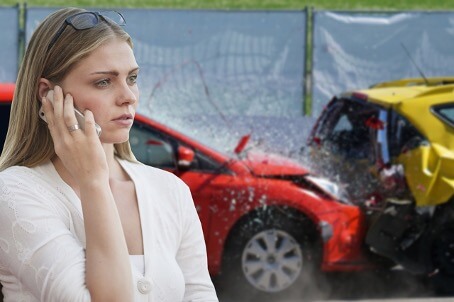News
Vehicle owner liability in the event of a chain rear-end collision

Source: Select Insure Group - Auto Insurance https://selectinsuregroup.com/auto-insurance/
Vehicle owner liability in the event of a chain rear-end collision
The Higher Regional Court (OLG) in Celle in Germany had to deal with the question of who is liable for any damage caused in a so-called chain rear-end collision. A chain rear-end collision occurs when a car hits the car in front in such a way that this car also hits the car in front.
In this case, a drunk driver rear-ended a VW Golf with his Dodge, which was at the end of a traffic jam. Since the Dodge hit the VW Golf without braking, the VW Golf was pressed against the Seat, which was in front of the VW Golf. In this accident, a 10-year-old boy who was sitting in the back seat of the VW Golf suffered injuries so severe that he will most likely require care for the rest of his life. The insurance companies of the Dodge driver and the Golf driver agreed to be jointly and severally liable for the damages sustained by the boy. The insurance company of the Seat driver, however, rejected liability because the accident event was unavoidable for the Seat driver, who was only passively involved. After the Regional Court had followed this opinion in the first instance, the Higher Regional Court of Celle now decided differently.
According to the assessment of the OLG, the accident had occurred during the operation of the Seat, so that the strict liability of § 7 para. 1 StVG applied. The Seat, which was in a traffic jam, had been involved in the rear-end collision in its function as a means of locomotion and transport, even if it had not been moving at the time of the accident. Liability under Section 7 (1) of the StVG was the price to be paid for opening up a source of danger by using a motor vehicle in a permitted manner. The regulation covers all damage sequences influenced by the motor vehicle traffic, which are co-determined by the operation of the motor vehicle. In order for an incurred damage not to fall under the protective purpose of § 7 StVG, the damage must have occurred in a situation that originates in a circle of danger that lies outside of road traffic. However, this is not the case with a rear-end collision, which is typical in traffic jams. For this reason, the fact that the Dodge driver had lost control of his vehicle did not change the judges' opinion. Likewise, there was no case of force majeure, since the accident was due to an internal traffic event.
Thus, the OLG concluded that the insurance company of the Seat driver must also be liable for the boy's damages. The OLG's ruling is in line with the case law of the BGH. The BGH also draws the framework for the operational risk of a vehicle according to § 7 StVG very broadly. Thus, the BGH has assumed the liability of the owner of a trailer properly parked at the roadside in the event that the trailer is set in motion without the owner's intervention due to the incorrect behavior of another road user and damage is caused as a result.
